The Top 7... Insanely stupid video game storage media that had no right to work
But some of them did. Sort of
5. TV broadcasts
Those modern, online-enabled consoles are such smug bastards. Downloadable content. Game demos. Exclusive game-related video content. They’ve got it all, and oh do their digital willies wave hard and fast as they show off their exciting brave new world of disc-free offerings on a daily basis. But the thing is, it’s not their brave new world. It’s not their brave new anything. In fact it’s all just a bunch of recycled ideas that were being done years ago. And the funniest bit of this throbbing ball of secret irony? One of the first pioneers of this sort of gamingcontent was the company currently lambasted as the most backward in the industry when it comes to DLC. Yeah, alongside Sega, Nintendo was smashing this stuff out in the ‘90s.
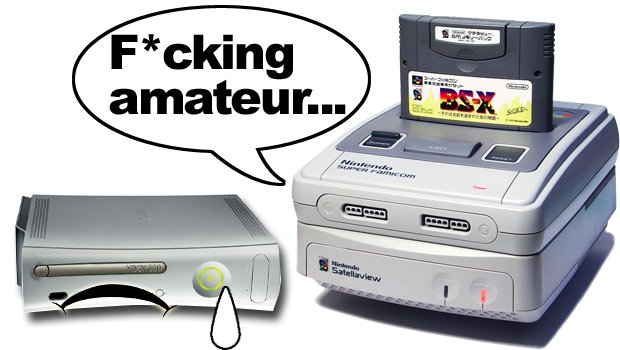
With the internet still fairly rubbish back in the 16-bit era, and the consoles of the day woefully under-equipped to deal with the likes of web-browsing and on-board data storage, a different method was used. And that method, my friends, was the very medium that games have come to supersede for a lot of us. TV. Nintendo’s solution was the Satellaview, a plug-in unit that connected to the SNES and allowed it to receive scrambled data broadcasts over a Japanese satellite TV network. The Megadrive opted for a cable TV-driven system, but both worked in similar ways.
Sega’s version, The Sega Channel, provided mainly games and demos in exchange for a monthly subscription fee. Although certain games had top be modified to work (Street Fighter II had less characters, for example, and some games had to be downloaded in multiple chunks), there was a hell of a lot of content on there, and some games even got special editions.
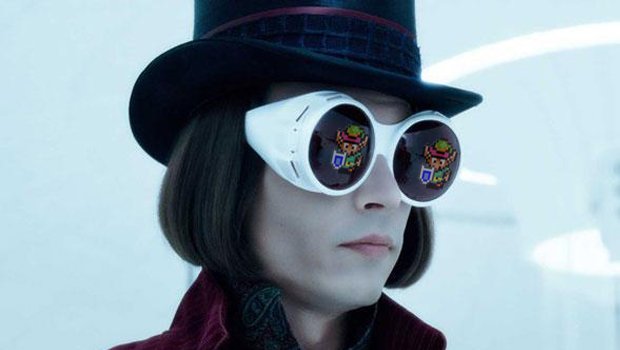
Above: The technology Nintendo and Sega used was EXACTLY the same one perfected by Willy Wonka. Maybe
Nintendo’s approach was even more experimental. With multiple hours of live game broadcasting every day and an 8 Mb memory card for saving data, the Satellaview provided the usual array of pre-existing and exclusive games, but also provided episodic content. You might get the first few hours of an RPG on Monday, for instance, then have a new area unlocked on Tuesday, and a new set of quests or plotlines on Wednesday. There were live competitions on certain games at scheduled times, with real prizes, and even fully-voiced “SoundLink” games, which brought genuine voice acting to the 16-bit era. Most notably, BS Zelda no Densetsu became the first Zelda game to have fully-voiced dialogue. Other games used streamed vocal performances to add hints and tips to games, or add radio-play-like narratives. The only disadvantage was that the voiced content had to be played ‘live’ at the designated broadcast time. But in a way, that actually made it cooler.
Greatestadvantage as a format
Fresh, dynamically-updating game content every single day.
Sign up to the GamesRadar+ Newsletter
Weekly digests, tales from the communities you love, and more
Greatestdisadvantage as a format
The possibility of missing your favourite game because you were having your tea.
4. Someone else%26rsquo;s hard drive
No, before you start getting ideas of dastardlyiness and skulduggery, we’re not talking about having a rifle through the games on a PS3 you’ve just lifted from some unfortunate sod’s house under the cloak of darkness. Stealing people’s hardware is wrong, and would render you completely unable to enjoy all of those illicit games. It’s a known biological fact, you see, that human guilt seeps out of the fingertips as an acrid and slightly acidic secretion. It plays havoc with the grippy surfaces of analogue sticks, and it’ll melt your keyboard right through to the desk. No, instead we’re talking about the wonderful futuristic innovation of streamed gaming, whereby games are run on a central server and a video feed fed to your computer over the internet. It’s fresh, exciting, a bit laggy, and can make your games look a bit like this:
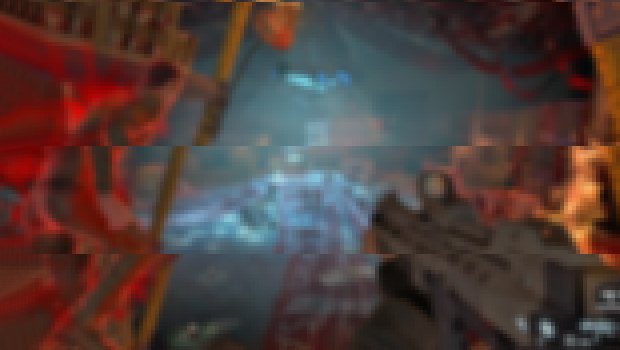
PROGRESS! In fairness, the performance of services such as OnLive has been proven to be at least adequate since live game streaming started trying to eke its way into the market. Not as good as playing locally, as a result of control lag and inconsistent video quality, but... Well, yes, let’s say ‘adequate’ and leave it at that, shall we? At least for more casual players, who aren’t that bothered about graphical crispness or ultra-responsive controls, anyway. Though ironically the system does seem marketed as a cheap alternative to a hardcore gaming PC, whose purpose is sure ultra-pimp graphical output. Anyway, there are other issues that bother us, beyond those that can be fixed with a beastly broadband connection.
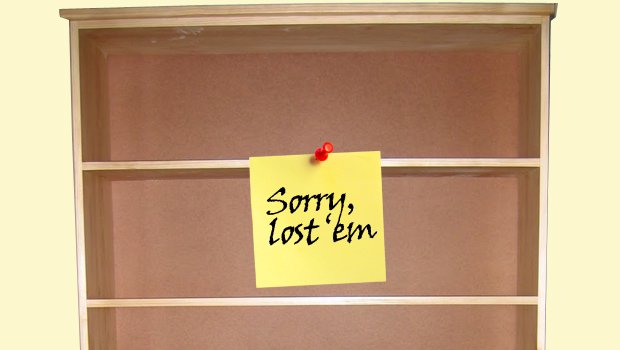
Above: Shelves will never pull this bullshit. Streamed gaming could
Take the concept of ownership. Streamed gaming has, and it’s locked the concept away in a box and buried that box somewhere you can’t get to it. Because the games you buy are never actually operated in your presence, either by disc or downloaded files on your PC, if a streaming service has a server meltdown, or worse, goes out of business, you could find yourself with no game collection at all. Immediately. And without warning. And you’d have paid for that shit.
Imagine if your games shelf at home behaved like that. You’d be livid.
Greatest advantage as a format
You don’t need to fork out £500 – £600 for a monster of a gaming PC
Greatest disadvantage as a format
You’ll sort of wish you had once you realise that you’re playing in sub-standard-def resolution with a four-hour input delay.
3. UMD
The idea sounds logical at first. Sony made MiniDiscs in the early '90s. It also made the first PlayStation.So why not useMiniDiscs as a storage device for a handheld PlayStation? It makes perfect sense. Smaller discs, same games, right? But PSone ran its course, and lo,there was no handheld. Then PS2 games came along, which were too big for puny MiniDisc. Finally, a portable PlayStation was announced along with the sort-of-like-a-rounder-MiniDisc Universal Media Disc, or UMD. Designed to be a new way of buying movies, games and even music, the format was bespoke, but supposedly 'universal'.
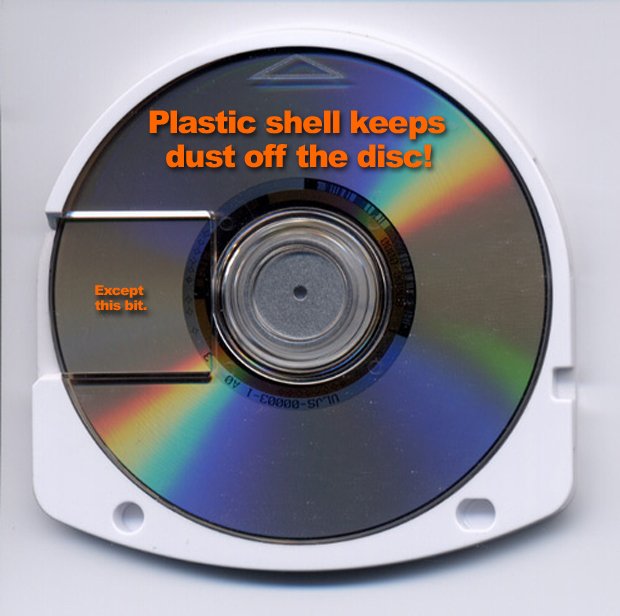
Above: There it is – a triumph of self-defeating design
But nobody else made a UMD-playing device, restricting the market solely to PSP owners. If anything, PSP itself was (and is still) a poor fit for the format. Optical discs require moving parts to turn them and read them – all of which are going to sap the battery of any handheld unit. UMDs are also physically way bigger than DS cards, so anyone with a half-decent game library is stuck carrying around a huge, clattering great bag full of storage media. Oh, and the clear plastic 'protection'on the outer casing of early discs is too easy to accidentally push in, which stopsthe disc itself fromturning.
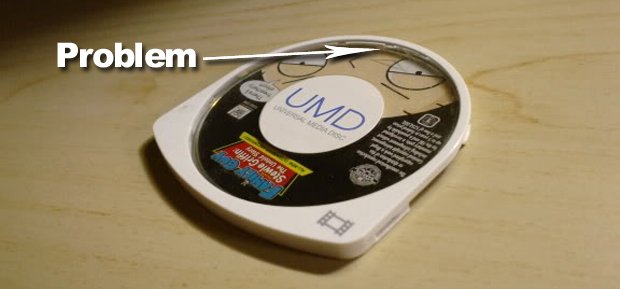
Above: Never mind the fact Family Guy's perfect for compressing to memory stick, early UMDs were flawed
So, while it all made perfect sense on paper, the reality is that UMD became the most un-universal storage format ever. Film companies ducked out as soon as they realised nobody was going to pay £15 for a UMD video when they could rip their DVDs to a memory stick and watch them on PSP anyway FOR FREE.
Perhaps recognising the sinking ship, even Sony tried to move away from it, with the UMD-less PSP Go. Still, credit where it's due... PSP Go itself was an even bigger failure and is already obsolete, whereasthe bog-standardPSP is still regularly topping the Japanese hardware sales charts. Go figure.
Greatest advantage of the format
Bigger than DS cards, so… harder to lose? #strawclutching
Greatest disadvantage of the format
All of the above. Plus, handhelds had been load-time free forever. And then UMDs came along.
Next: Could there be two whole things more ludicrous than the UMD? Why yes there could. Sweet Jesus...


